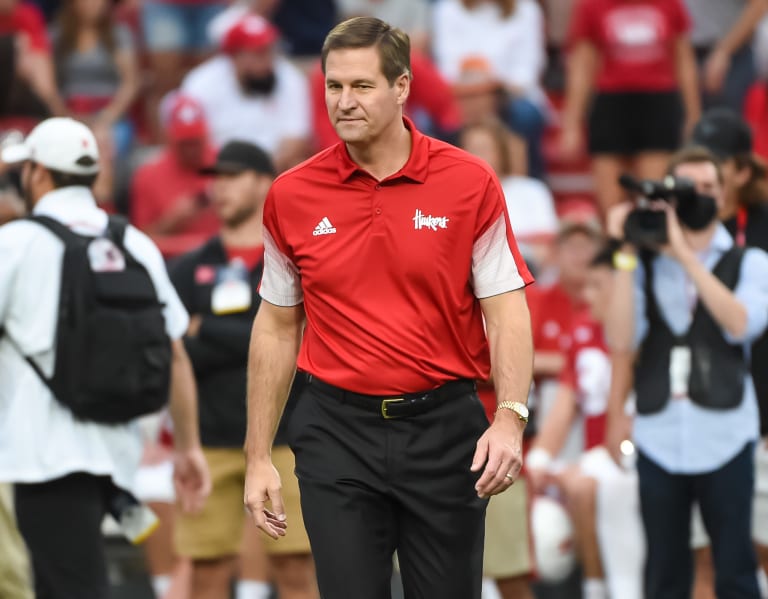
JMI Sports is adding a big feather to its cap by gaining Nebraska athletics’ multimedia and broadcasting rights, reportedly agreeing to shell out about $18 million a year in guaranteed money.
Now comes the hard part: Can the San Diego-based sports marketing company not only cover that guarantee but considerably expand the revenue base over the 12-year length of the tentatively approved contract with a total value of $215 million?
That leads to other questions: Given recent won-loss records in football and men’s basketball, does the Nebraska brand still have enough cache with advertisers? What new revenue sources can be tapped, such as facility naming rights for Memorial Stadium or advertising from the gambling, alcohol, and national food brands? Will there be a role for the burgeoning business in athletes’ name, image, and likeness? Will social media become a more effective revenue-generating tool?
“JMI knows what they are doing,” one source said. “They have a plan.”
Nebraska’s new multimedia partner is a “strong competitor” in the sports marketing industry, along with companies such as Learfield/IMG and Legends, said Jordan Bloem, senior vice president of client strategies at Navigate Research, a data analytics and consulting company based in Chicago that works with colleges on multimedia rights.
JMI has plenty of experience in mining for dollars for clients like Georgia, Clemson, Notre Dame, Pittsburgh, Harvard, Pennsylvania, and the University of Kentucky. And Tom Stultz, JMI’s president and the point man on the Nebraska deal, knows this market, thanks to more than 40 years of multimedia marketing experience with companies such as Host Communications and IMG.
“Nebraska is still a really appealing property,” one industry observer said. And while the recent lack of success doesn’t help, he added, sports marketers “are selling passion, not wins and losses. There’s a lot of emotion involved.”
Despite repeated efforts, neither Stultz nor other JMI executives could be reached for comment for this story. Nor have they spoken publicly to other media outlets since the contract was announced by Nebraska athletic director Trev Alberts several weeks ago.
Nebraska’s Board of Regents is expected to review the proposed contract at its April 8th meeting. If approved, the partnership would be up and running at the start of the university’s new fiscal year on July 1.
So, for now, the details of JMI’s contract are purely speculative.
For this story, HuskerOnline interviewed several broadcasting and marketing executives familiar with JMI, including several who agreed to speak anonymously because of work relationships. In addition, JMI’s work with other universities certainly provides a blueprint of what could be in store in Lincoln on everything from seat pricing to radio and print advertising to new local, regional, and national sponsorships.
The switch to JMI, comes about eight months after Nebraska made the unusual move of taking its multimedia and broadcasting business in-house. That eye-brow-raising decision, approved a year ago by then-athletic director Bill Moos, ended a long-standing relationship with Learfield/IMG that came with a reported $12 million annual guarantee.
At the time, Nebraska was thought to be the only major Power 5 college athletic program operating its own multimedia business.
“It was a gutsy decision” by Moos and senior deputy athletic director Garrett Klassy that just didn’t pan out in the short term, one source said.
Despite pulling the plug on the in-house model, the marketing department expects to generate $15 million in gross revenue, with a net after expenses of $11 million, for the current fiscal year, said Keith Mann, a Nebraska athletic department spokesman.

What went wrong?
The short-lived decision to move Nebraska’s multi-media rights and radio network operation in-house proved to be a gamble that cost the athletic department the chance for millions in potential revenue at a time when every dollar counted because of the financial strain caused by the pandemic.
Could the self-run model have worked over the long haul? Perhaps, industry observers said, noting that the venture never was going to be able to move the revenue ball forward in year one.
What happened? Observers cited several reasons.
*The pandemic turned business models and long relationships upside down. Learfield/IMG was particularly hit hard, and could no longer afford to offer the financial guarantees that Nebraska had been accustomed to, observers said.
Before Covid became a household word, Learfield/IMG reportedly had offered Nebraska a new contract with a $20 million a year guarantee, up from about $12 million. But for whatever reason, that deal on the table never closed.
Then the pandemic hit, and Learfield/IMG this time pitched a revenue-sharing proposal instead of guaranteed money. But Nebraska opted to move in a different direction.
“Had the pandemic not hit, I don’t think Nebraska would have brought its multi-media work in-house,” one observer said.
Klassy told HuskerOnline at that time that the “guaranteed money that we enjoyed in the past was no longer available,” hence the decision to move the operation in-house.
*Dropping Learfield/IMG meant that Nebraska lost business with national clients who sprinkled advertising dollars across the college landscape. For example, the marketer could connect a tire company or a car brand to dozens of markets, not just Lincoln.
“IMG brought the power of critical mass,” one observer said. But when Learfield/IMG was
dropped, Nebraska lost “a significant amount of national business.” Dollar amounts could not be confirmed.
*The athletic department did not have enough boots on the ground in year one to pitch new business and maintain existing relationships. Observers said the new marketing department needed about 10 full-time sales staffers. The actual number of Nebraska’s sales force could not be determined, although several observers said the department was understaffed.
A related factor: Added expenses to cover salaries, office overhead and all the other costs involved with a start-up of any kind. “That’s a lot to switch out and cover in one year,” an observer said.
*Wins and losses. The timing of the marketing makeover could not have been worse in terms of pitching advertising and other deals while losses piled up on the field and the hardwood.
While industry experts said game-day performance was a factor, it was not as big a downer and one would think. “Businesses still want to be part of Nebraska” athletics, one expert said.
On the other hand, winning cures everything when it comes to closing a sale.
*The leadership change in the athletic department, with the hiring of Alberts last year, meant most every aspect of the business would come under scrutiny.
When the JMI deal was announced, Alberts told the Lincoln Journal Star that the “decision to keep our multi-media rights in-house allowed for the opportunity to thoughtfully evaluate the advantages and disadvantages of an internal program while multimedia rights companies reset themselves for a post-pandemic marketplace.”
Alberts noted that after “thoughtful consideration and feedback, we believe the best model is for Husker athletics to return its multimedia rights to an industry expert.”

By the numbers
Start with about $18 million in guaranteed money annually.
Then estimate another $3 million or so to cover salaries, office space, and other back-office necessities. That brings JMI’s fixed costs to potentially about $21 million or more, meaning that’s how much revenue JMI would need to generate before it could start turning a profit.
Industry observers said JMI will not likely turn a profit on the Nebraska business early on, which is typical for these types of arrangements. But, as one source said, the company would expect to make money “on the back end of the deal” as JMI builds up its book of business with Nebraska.
JMI will need to build a strong staff of people who know the Nebraska program and know the state. It’s likely that at least some of the staff currently working on multimedia accounts will stay on and work for JMI.
Details of the proposed contract with JMI likely won’t be released until the Board of Regents vote. There are several revenue models that sports marketing companies use. For example, does the contract contain a signing bonus for Nebraska? Will there be any revenue-sharing over and above the guaranteed money, which has become more conventional in multi-media deals? What exactly will JMI be allowed to sell and promote, and what will be off-limits?
JMI, which was founded in 2006, may not have the largest portfolio of clients, but they represent some big-name schools and athletic conferences. In the words of Navigate’s Bloem, JMI “is a very qualified player in the industry.”
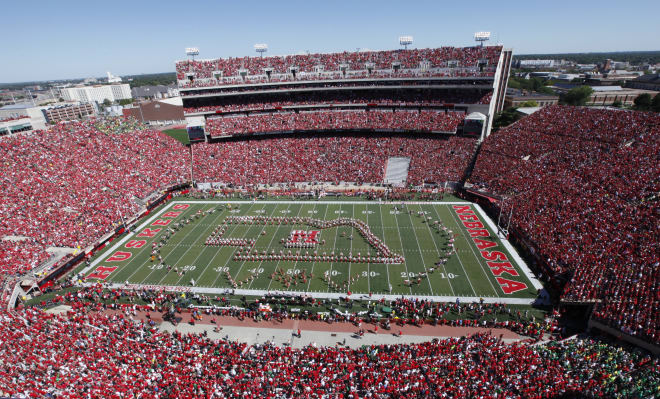
What’s next for Nebraska?
College basketball fans are familiar with Rupp Arena, the home of the University of Kentucky Wildcats. But the official name of the building? Rupp Arena at Central Bank Center.
All of which begs the obvious question: Could naming rights, for example, be attached to Memorial Stadium and Tom Osborne Field?
JMI, which gained Kentucky’s marketing and media rights in 2015 with a 15-year $210 million deal, along with a $29.4 million signing bonus, was directly involved in Kentucky’s naming rights deal. The deal was announced about two years ago when the iconic arena was undergoing a major renovation. Central Bank also has the naming rights to the convention district surrounding Rupp Arena.
Central Bank agreed to pay $1.5 million annually through 2033 for the naming rights, bringing its total investment in Kentucky sports to an average $4.1 million annually. (The arena, which is part of a sports and entertainment complex, is owned by the Lexington-Fayette Urban County Government.)
JMI explained its role in the overall Rupp Arena renovation project on the company’s website: “ JMI created a detailed revenue model to assess the feasibility of the renovation and helped define the number and character of the proposed premium (seating) spaces.”
JMI said it worked with the architects and the university to “customize the unique look and feel for each of the new club spaces and ensure that the associated amenities – including proximity to parking, the quality and diversity of food service options, and access to seating – were consistent with the different price points.”
In addition to overseeing aspects of the design and construction, JMI said it continues to explore “revenue generation opportunities to maximize the benefit to the university.”
Rupp Arena was the third naming rights deal that JMI put together through its partnership with Kentucky.“
Bloem said JMI has also tried to add sports marketing clients that fit Kentucky’s culture. For example, Kentucky has partnered with the Bluegrass state’s iconic Maker’s Mark bourbon to help raise money for an academic center for student-athletes. Some of the funding has come from the sale of special commemorative bottles of the distillery’s bourbon.
The Pitt Panthers joined JMI’s team in July 2019. One of its marketing initiatives involved signing the Pittsburgh Brewing Co. as the official local beer of the Panthers. The move was part of an upgrade of Pitt’s basketball arena, which included beer sales.
The deal included naming rights of a premium seating area inside Pitt’s arena, branding within this designated area, in-venue LED signage, radio advertising over the Pitt radio network, and other promotional wrinkles. The financial terms were not disclosed.
JMI also represents Notre Dame as part of a joint venture with the Legends sports marketing company. The partnership, called Notre Dame Global Partnerships, manages the sales, marketing, sponsorship, premium hospitality, multimedia rights and branding services for Notre Dame athletics.
Industry observers said they expect JMI to borrow a few plays from what’s worked at clients such as Kentucky and Clemson, especially in providing fans with special game-day experiences. “The SEC wrote the book on experiential marketing,” one source said.
One of the big unknowns for Nebraska is what role athletes’ name, image, and likeness business will have on future marketing efforts.
Kentucky recently announced a marketing partnership with the NFT non-fungible token platform Mercury. The program, called Blue Chips, was created with men’s basketball players as part of an expanded NIL deal.
“This is a very exciting partnership because it strengthens an existing NIL deal and offers substantial enhancements for both Mercury and the players,” Kim Shelton, president of Kentucky Sports & Campus Marketing said in a statement.
Steve Rosen covers the business of sports for Huskers Online. Reach Steve with questions, comments, and story ideas at sbrosen1030@gmail.com.

Must See
-


Football
/ 2 months agoHuskers Fight Hard but Fall Short Against UCLA
LINCOLN – The Nebraska Cornhuskers gave it their all on Saturday, with standout efforts...
-
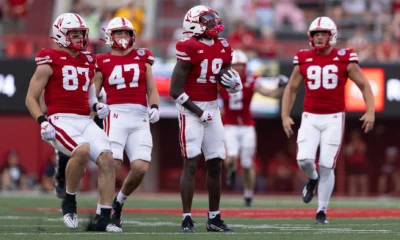

Football
/ 2 months agoGAMEDAY: Nebraska Set to Face Undefeated Indiana in Key Big Ten Showdown
Bloomington, IN – It’s Game Day, Husker Nation! Nebraska (5-1, 2-1 Big Ten) returns...
-


Football
/ 3 months agoBlackshirts Shine as Nebraska Tops Rutgers 14-7 on Homecoming
Lincoln, NE – Nebraska’s Blackshirt defense played a starring role in the Huskers’ 14-7...
By Chris
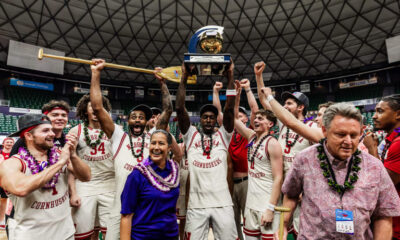

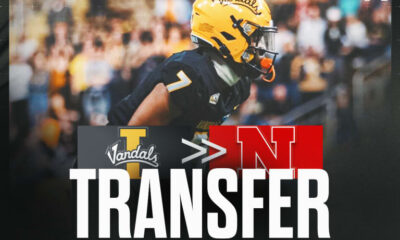

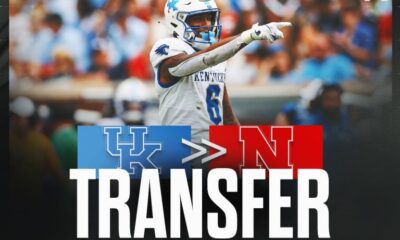

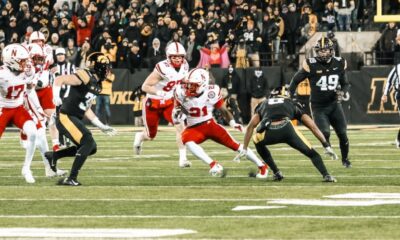

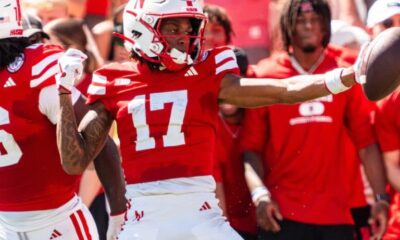

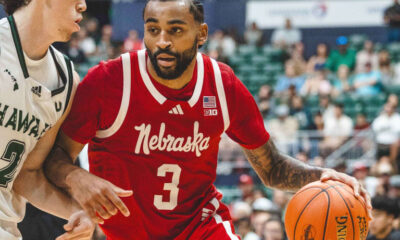

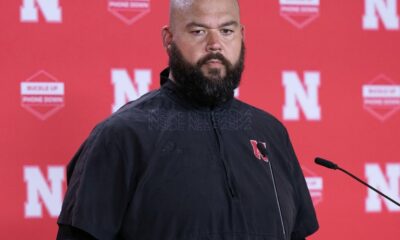

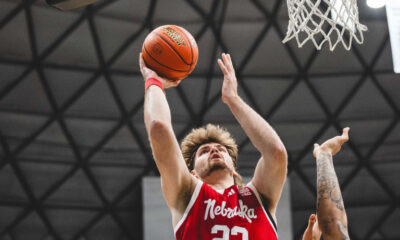

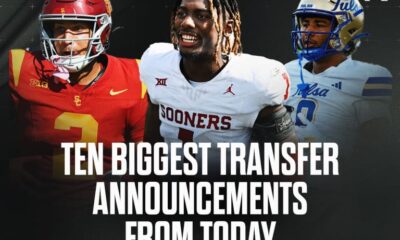




You must be logged in to post a comment Login